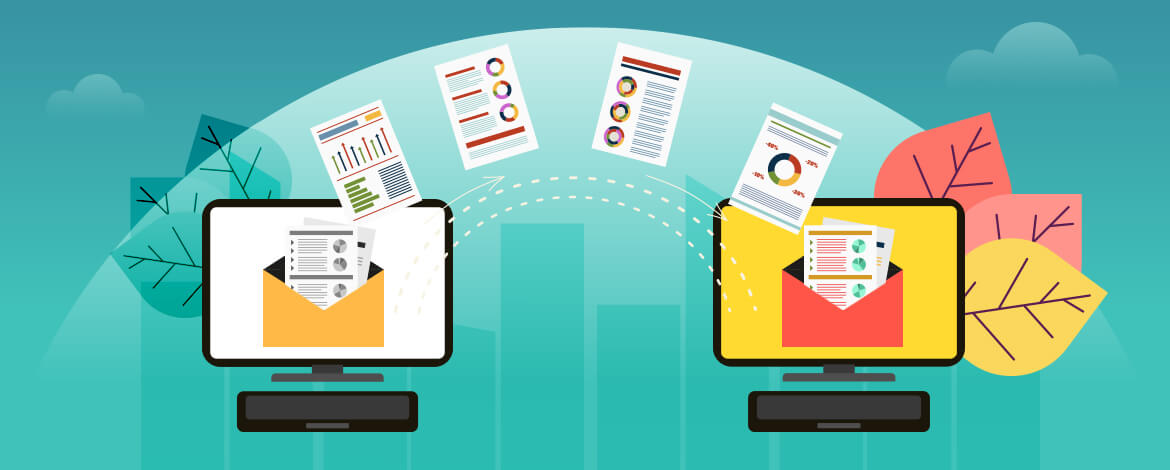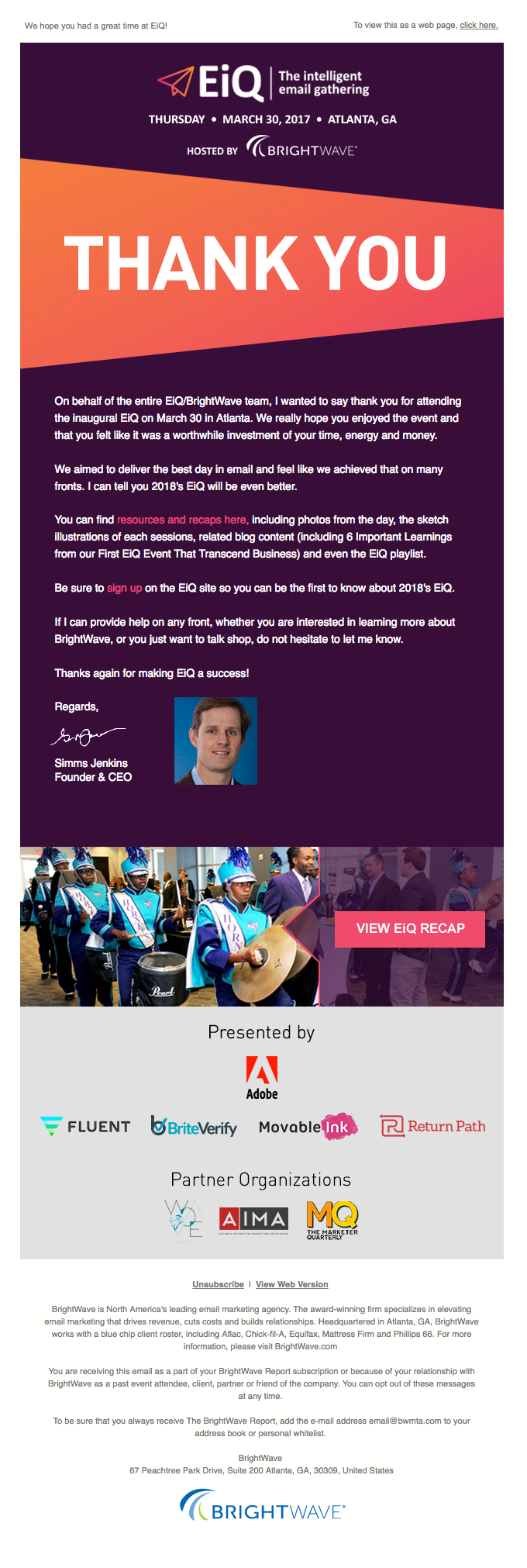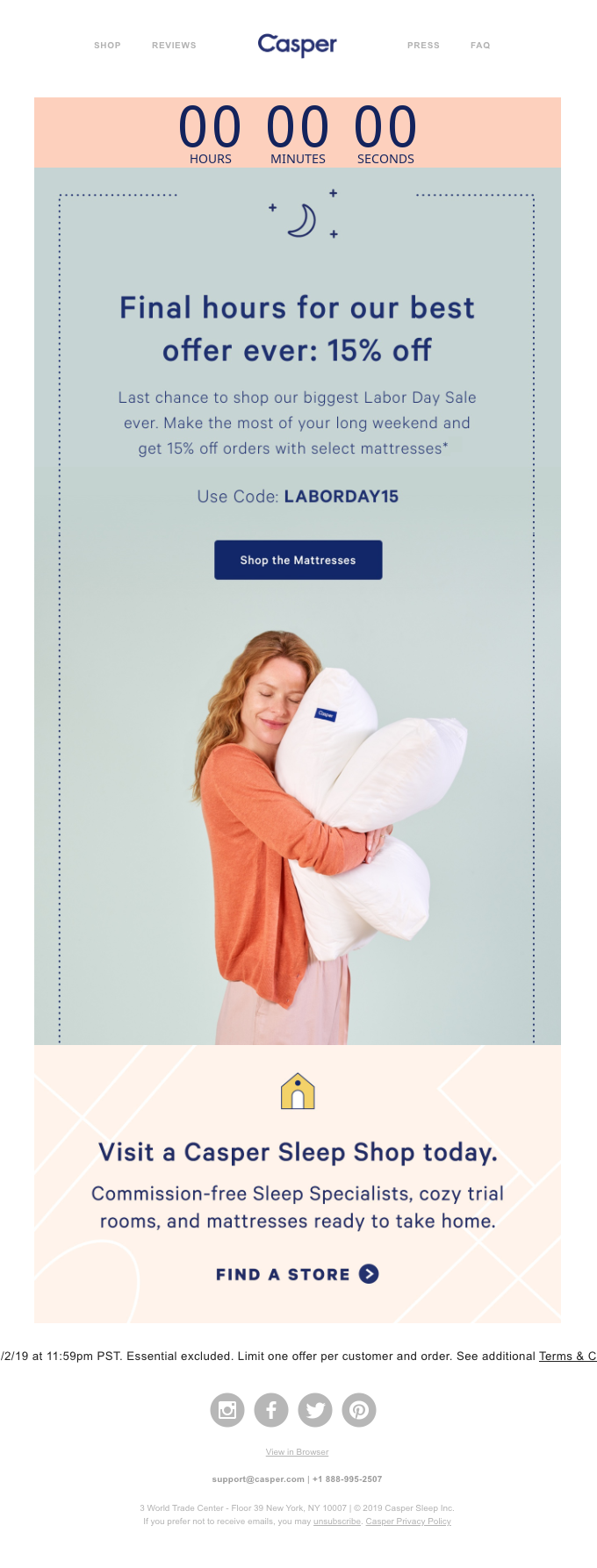In the modern world, where customers are exposed to more information than they can process, much less consume, effective email marketing is a must-have for any brand. When done right, email marketing can help you get the right message across to your audience and make sure that it gets heard. And in order to make email marketing the foundation of your cross-channel marketing efforts, the right Email Service Provider (ESP) is absolutely essential.
Salesforce Marketing Cloud (SFMC) achieved the position of Leader in Gartner’s 2020 Magic Quadrant for Multichannel Marketing Hubs.
SFMC’s success is partly due to its email marketing tool, Email Studio.
Email Studio makes it easy for marketers to know their customers and engage with them in personalized, meaningful ways in order to garner long-term brand loyalty. With SFMC and Email Studio, you can segment and target your audience, and then deliver the best email campaigns with excellent speed, security, scalability and deliverability – from basic newsletters to complex one-to-one campaigns.
If you’re thinking of migrating from another ESP to Salesforce Marketing Cloud, it’s likely that you’re not familiar with SFMC, and the migration effort can be somewhat daunting.
Nonetheless, you can set yourself up for migration success if you follow some proven best practices. In this article, we will cover 5 such time-tested practices to help you seamlessly migrate from your current ESP to SFMC.
#1: Know what you’re signing up for
Before you make the move from your current ESP to SFMC, you should be very clear on what you’re getting. This starts with understanding your contract because if you don’t know what you’re getting with SFMC, you won’t know what you can do with it. And this is critical, whether you’re an email marketing manager or a Salesforce certified email specialist.
Ask the following questions:
- How many super messages does your contract provide for?
- How many Sender Authentication Packages (SAPs) will you get?
- Do you need a private domain? Why or why not?
- How many contacts did you contract for? What’s the cost per contact?
- What kind of support will you get from the Salesforce team?
- Does your contract include a sandbox, a development and testing environment within Salesforce?
- Does your SFMC instance include features that will require an in-house technical team? Do you really need these features or are out-of-the-box features sufficient?
#2: Become familiar with SFMC lingo
Do you know what these SFMC terms mean?
- Data extension
- Content Detective
- Guided send
- Send classification
- Content blocks
Or how Salesforce templates in SFMC work?
Are you aware that you can use the same SFMC email template as the basis of multiple emails?
Have you seen an SFMC email example in the real world? Would you recognize it if you did?
SFMC Email example #1: Newsletter
SFMC Email example #2: Reactivation email
SFMC Email example #3: Post-event thank you email
SFMC Email example #4: Special offer email
Do you know how AMPscript can be embedded within an HTML email template in SFMC Email Studio?
Are you familiar with the best practices for setting up A/B testing in SFMC Email Studio?
Before you migrate to SFMC, you should familiarize yourself with SFMC parlance. By doing so, you can shorten your learning curve and ensure that the migration to SFMC is seamless and headache-free.
#3: Define your data strategy – and finalize it early
SFMC Email Studio is a feature-rich ESP with built-in intelligence and advanced email creation capabilities. And the best way to effectively leverage its features – whether your email marketing team is full of novices with no coding experience or led by HTML pros with years of experience — is to define your data strategy early. This is because how you collect, leverage, store and analyze data in SFMC is critical to getting the best possible value out of tools like Email Studio, Journey Builder, Contact Builder, etc.
Make sure you ask these questions:
- What does your data model look like? Do you need to get compliance or legal approval for it?
- Will you use SFMC like a CRM to store all your data or will you integrate it with an external data warehouse?
- How many data sources will you connect to SFMC?
- Will you use REST or SOAP API?
- How will you define your audience?
- Will you have one master data extension or break up the data into various tables?
- Do you know the difference between a list and a data extension and how they are used?
- Do you know how to set up Contact Builder?
- Are you aware of the differences between global unsubscribe, master unsubscribe and list unsubscribe?
During migration, make sure you clean your data, configure the platform to honor opt-outs and import subscribers from your current ESP who have unsubscribed into SFMC. Once you complete the migration, determine what data you’ll need for your most valued campaigns, and then migrate clean data for those first.
#4: Configure accounts and make sure everyone has clarity on roles and responsibilities
Not everyone in your team will require the same level of access to SFMC. It’s important to recognize this fact early before you implement it or start training your team on it. Think about the levels of permissions you need to set up for the various people in your organization. Within SFMC, you can set permissions at the group level (e.g. Admin, Analyst or Reporting) or at the user level. If the off-the-shelf roles defined within SFMC do not meet your specific requirements, you can also create Custom Roles.
Define what permissions should be allowed or denied for each role across all areas of SFMC including:
- Marketing
- Design
- Analytics
- IT/Development
- Legal
- Customer service, Sales and Leadership
You should also have clarity on how you will configure SFMC for your organization. This will help you avoid confusion when the time comes to actually start using SFMC and Email Studio:
- How many Business Units do you need? Do you need one for production and another one for testing?
- Finalize your naming convention for various assets including folders, data extensions and images. Organize them and make them easily accessible. Also get rid of the junk that’s taking up space in your current ESP. Declutter!
- Set up and finalize the sender and delivery profiles you’ll use for transactional and commercial emails
Also make sure that you set up all data extensions, API integrations, automations, and triggered sends to ensure that all programs (and messaging) are transitioned seamlessly. Finally, set up the necessary system/activity alerts, register your account on trust.marketingcloud.com to receive platform alerts, and also warm up your IPs before starting your normal sending routine.
#5: Set up your SFMC Knowledge Management ecosystem
Migrating from an old ESP to SFMC involves more than just technical details. Many migration projects fail because one important aspect of success gets ignored – people.
Is your email marketing team ready for the migration? Or are they resistant to change and clinging to an if-it’s-not-broken-why-fix-it philosophy? This might happen if they’ve been using a certain ESP for a while and don’t quite understand the value of migrating to a new ESP, even one that’s as user-friendly as SFMC. That’s why training and documentation should be a crucial aspect of your migration strategy.
These tips can help:
- Document everything about the migration, including data models and data flows, API calls, business unit hierarchies, approval processes, etc. Create ‘living’ documents and update them regularly. Make sure they’re easily accessible for those who need them.
- Use Salesforce training sessions and materials for your team.
- Create branded training materials if required before you complete the migration so you don’t end up wasting time or delaying implementation.
- Your training program can be a mix of documentation, classroom (or CBT) training, practice simulations and 1:1 sessions.
Wrap Up
One final best practice we recommend is keeping your old ESP on for 30-60 days, even after you start using SFMC. This overlap will help ensure that all the information has been transferred to SFMC and also give your team enough time to get used to the transition.
A migration to SFMC can be daunting. But with the right team, the right approach and the 5 best practices we have covered in this guide, you will be able to derive the most value from one of the most popular CRM platforms.









Kevin George
Latest posts by Kevin George (see all)
How to employ Marketo Engagement Engine to Nurture Leads
Landing Page SEO Optimization for Long-term Lead Conversions